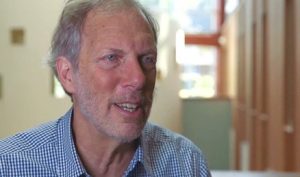Nationalizing Fossil Fuel Industry Is A Practical Solution To Rising Inflation
No Comments yetSince mid-2020, inflation has been rising, with the level of average prices going up at a faster rate than it has since the early 1980s.
In January 2022, prices had increased by 7.5 percent compared to prices in January 2021, and it now looks like the U.S. may be stuck with higher inflation in 2022 and even beyond.
Why are prices rising so dramatically? Are we heading toward double-digit inflation? Can anything be done to curb inflation? How does inflation impact growth and unemployment? Renowned progressive economist Robert Pollin provides comprehensive responses to these questions in the exclusive interview for Truthout that follows. Pollin is distinguished professor of economics and co-director of the Political Economy Research Institute at the University of Massachusetts at Amherst.
C.J. Polychroniou: Back in the 1970s, inflation was the word that was on everybody’s lips. It was the longest stretch of inflation that the United States had experienced and seems to have been caused by a surge in oil prices. Since then, we’ve had a couple of other brief inflationary episodes, one in the late 1980s and another one in mid-2008, both of which were also caused by skyrocketing gas prices. Inflation returned with a vengeance in 2021, causing a lot of anxiety, and it’s quite possible that we could be stuck with it throughout 2022. What’s causing this inflation surge, and how likely is it that we could see a return to 1970s levels of inflation?
Robert Pollin: For the 12-month period ending this past January, inflation in the U.S economy was at 7.5 percent. This is the highest U.S. rate since 1981, when inflation was at 10.3 percent. Over the 30-year period from 1991 to 2020, U.S. inflation averaged 2.2 percent. The inflation rate for 2020 itself was 1.2 percent. Obviously, some new forces have come into play over the past year as the U.S. economy has been emerging out of the COVID-induced recession.
To understand these new forces, let’s first be clear on what exactly we mean by the term “inflation.” The 7.5 percent increase in inflation is measuring the average rise in prices for a broad basket of goods and services that a typical household will purchase over the course of a year. At least in principle, this includes everything — food, rent, medical expenses, child care, auto purchases and upkeep, gasoline, home heating fuel, phone services, internet connections and Netflix subscriptions.
In fact, prices for the individual items within this overall basket of goods and services have not all been rising at this average 7.5 percent rate. Rather, the 7.5 percent average figure includes big differences in price movements among individual components in the overall basket.
The biggest single factor driving up overall inflation rate is energy prices. Energy prices rose by 27 percent over the past year, and within the overall energy category, gasoline rose by 40 percent and heating oil by 46 percent. This spike in gasoline and heating oil prices, in turn, has fed into the total operating costs faced by nearly all businesses, since these businesses need gasoline and heating oil to function. Businesses therefore try to cover their increased gasoline and heating oil costs by raising their prices.
The second big factor is automobile prices, used cars in particular. The average price of used cars rose by 41 percent over the past year. High auto prices do also feed into the costs of other businesses, though not to as large an extent as energy costs.
The third big factor has been wage increases. Average wages rose by 4.0 percent over the past year. Here again, businesses will try to cover these increased wage costs through passing the costs onto consumers through higher prices. That said, we need to be clear on some details about the wage increases. First of all, for the average workers, their 4.0 percent wage increase is 3.5 percent below the 7.5 percent increase in prices for the average consumer basket. This tells us that, due to the 7.5 percent inflation rate, the workers’ 4.0 percent wage increase ends up amounting to a 3.5 percent pay cut after we take account of what the workers can buy with their wages.
Second, not all workers have gotten this average 4.0 percent wage increase. Some have gotten more and others got less. In fact, some of the largest wage increases went to workers employed in hotels and restaurants (8.4 percent raises) and in nursing home facilities (6 percent raises). These workers were hard-hit by the COVID pandemic and recession, through the dangerous conditions in nursing homes and the full-scale lockdowns of restaurants and hotels. Finance industry employees also got big raises, at 8.1 percent, though in this case, hardly to compensate for hardships over the previous year. These raises rather reflect the dizzying rise of the U.S. stock market during COVID and after, all fueled by the Federal Reserve’s $4 trillion bailout of Wall Street over the crisis.
What then are the key specifics underlying the overall inflation rise?
Let’s consider car prices, energy prices and wages in turn:
Cars: What is pushing up these prices is the widely discussed breakdown in global supply chains, and in particular, the sharp fall in the supply of computer chips that are needed for manufacturing new cars. The supply chain breakdown is far more widespread than just the computer chip industry. But auto manufacturing is where the impact on overall inflation has been most acute to date. This is because the demand for used car purchases spiked when the supply of new cars coming off of global assembly lines contracted.
Car prices will start falling when the computer chip supply becomes replenished. But this may not happen for several more months. In any case, both for the short term and over the longer term as well, the demand for car ownership can and should be reduced, through increasing the availability and quality of public transportation, along with people carpooling to work, and biking or walking when that is a realistic option. All of these ways to reduce our dependency on private cars will also, of course, mean lowering the demand for gasoline. And let’s not forget that when we burn less gasoline, we will then also reduce carbon dioxide emissions that are the primary cause of climate change.
Energy: Precisely because burning gasoline, heating oil, and other fossil fuel energy sources is the primary cause of climate change, what we most need to accomplish is to dramatically lower demand for fossil fuels. In other words, pushing fossil fuel prices back down is not helpful in terms of addressing the climate crisis since it would encourage greater fossil fuel consumption.
As such, government policy now needs to commit to both keeping fossil fuel energy prices high, but then to protect energy consumers from the impact of these high fossil fuel prices. This will require large-scale investments in energy efficiency, in all areas of buildings, transportation and industrial activity. Greatly expanding public transportation offerings is one place to start. Providing large subsidizes to retrofit residences with low-cost LED lights, improved insulation and high-efficiency electric heat pumps to replace inefficient boilers is another critical area. Government policy then needs to massively accelerate the production of clean renewable energy sources to supplant our existing fossil fuel energy infrastructure. It is already the case that the costs of generating electricity with solar and wind power are at parity or lower than with fossil fuels. Of course, not all of these investments in energy efficiency and renewable energy will have an immediate impact. Therefore, for the immediate term, the government should provide people with energy tax rebates to compensate them for the impacts of any temporary spikes in energy prices.
The more basic solution here would be for the government to take over the U.S. fossil fuel industry. Under a nationalized fossil fuel industry, the necessary phase-out of fossil fuels as an energy source can proceed in an orderly fashion. The government could then set fossil fuel energy prices to reflect the needs of both consumers and the imperatives of the clean energy transition. At present, the U.S. government could purchase controlling interest in the three dominant U.S. oil and gas companies — ExxonMobil, Chevron and Conoco — for about $350 billion. This would be less than 10 percent of the $4 trillion that the Federal Reserve pumped into Wall Street during the COVID crisis. More generally, these costs should be understood as trivial because nationalization would end these corporations’ relentless campaign of sabotaging the clean energy transition.
Wages: It is crucial to frame these current wage increases within the broader historical context. Over the past 50 years, the average wage for U.S. workers has stagnated (after accounting for inflation). Thus, as of January 2021, the average wage for nonsupervisory workers was at $25.18 an hour, while this figure for 1972, adjusted for inflation, was $25.28 per hour. This is while average labor productivity — the average amount each worker produces over the course of a day — has increased nearly 2.5-fold between 1972 and 2021. Thus, if average wages had risen in step with productivity gains, and no more, between 1972 and today, the average worker’s wage last year would have been $61.94, not $25.18.
Indeed, a major factor keeping inflation low for the previous 30 years was the fact that workers didn’t have the clout to bargain up their wages. Alan Greenspan, the chair of the Federal Reserve from 1987 to 2006, explicitly acknowledged this fact. He observed in 1995 that, even at low unemployment rates, U.S. workers had become “traumatized” by the loss of bargaining strength, resulting primarily from global outsourcing that pitted U.S. workers against those in relatively low-wage economies, such as China and Mexico. Greenspan was effectively describing what Karl Marx termed the “reserve army of labor,” in Volume 1 of Capital, except that the reserve army now operates on a global scale.
Within this perspective, we certainly do not want to keep inflation down through preventing workers from receiving the wage increases they more than deserve. But this is exactly the core idea undergirding the approach advocated by a large chorus of orthodox economists such as Lawrence Summers. Their proposals entail the Federal Reserve increasing interest rates significantly, with the aim of reducing spending in the economy since it will then become more expensive to borrow money. The spending cutbacks will then raise the unemployment rate. Higher unemployment, in turn, will inculcate workers with a necessary fresh dose of trauma. Wage demands will correspondingly fall.
In short, this is a program to accomplish exactly the opposite of what the Biden administration has promised in terms of delivering increased well-being to U.S. workers post-COVID.
Are there any feasible alternatives to the Fed raising interest rates as a means of controlling inflation?
The Federal Reserve has held the short-term interest rate that it controls at near-zero since the onset of the COVID pandemic in March 2020. The Fed also held this interest rate at near zero for six years in the aftermath of the 2007-2009 Wall Street collapse and Great Recession. Generally speaking, it should be possible for interest rates to be higher than zero without causing the economy to collapse. Interest rates could therefore rise modestly and incrementally. But this is different than the Fed imposing large interest rate increases for the purpose of raising the unemployment rate and, thereby, decimating workers’ bargaining strength.
An alternative program for addressing the current inflationary pressures should include:
-Responding to the full set of immediate supply-chain issues, starting with computer chip shortages. For example, expand public transportation and subsidize ride-sharing to dampen the demand for used cars while the computer chip bottlenecks are brought under control.
– Protect consumers from high energy prices through energy tax rebates and accelerating large-scale energy efficiency investments.
– Supporting ongoing wage increases. Businesses will have to absorb these increased labor costs to some extent, and thus, on average, see their profit margins decline modestly. U.S. businesses cannot expect that wage stagnation will remain a feature of U.S. capitalism for another 50 years, even while labor productivity continues to increase steadily. To the extent that big corporations, in particular, try to push their increased labor costs onto consumers through raising prices, the Biden administration should aggressively enforce existing antitrust (i.e., anti-monopoly) policies to control these price mark-ups over labor costs. They have already begun to do so.
Considering these measures as a whole, they are not likely to bring the inflation rate down into the 2 percent range that the U.S. experienced between 1990 and 2020. Keeping inflation that low will almost certainly require exactly more decades of traumatized workers and wage stagnation. But by itself, an average inflation rate in the range of 3-4 percent, as opposed to 1-2 percent, is not a serious problem, as long as that somewhat higher inflation rate results from increased wages and a more equal distribution of the economy’s overall income pie.
What is the impact of persistent inflation on economic growth and unemployment?
In fact, there is no consistent relationship between inflation, economic growth and unemployment. Rather, focusing now just on the high-income economies (i.e., those that make up the Organisation for Economic Co-operation and Development) since the 1960s, relatively high inflation, even in the range of 10 percent or higher, has been associated with periods of both high growth and low growth, depending on the specific circumstances.
In the 1960s, higher inflation rates emerged because economic growth was strong, as supply bottlenecks, such as we are experiencing now, became more common. Workers were also generally more able to bargain up wages and gain an increased share of the economy’s overall income pie. But facing such problems is certainly preferable to an economy operating at zero inflation that is also stuck in recession. As President Lyndon Johnson himself noted after U.S. inflation had arisen from 1.5 percent in 1965 to 3 percent in 1966, “If rising prices are a problem, they’re a lot better than a stagnant economy and high unemployment.” On the other hand, when high inflation resulted from the oil-producing countries (OPEC members) and the private oil corporations such as Exxon exercising monopoly power to quadruple oil prices in 1973, and then to double prices in 1979, the resulting overall inflation was associated with recession and high unemployment.
The 1970s inflation was also the precursor to the rise of neoliberalism at the end of the decade, with the election of Margaret Thatcher in the U.K. and then the 1980 election of Ronald Reagan in the U.S. As for the present, we absolutely cannot allow neoliberalism to bask in a new wave of legitimacy in the name of fighting inflation.
Copyright © Truthout. May not be reprinted without permission.
C.J. Polychroniou is a political scientist/political economist, author, and journalist who has taught and worked in numerous universities and research centers in Europe and the United States. Currently, his main research interests are in U.S. politics and the political economy of the United States, European economic integration, globalization, climate change and environmental economics, and the deconstruction of neoliberalism’s politico-economic project. He is a regular contributor to Truthout as well as a member of Truthout’s Public Intellectual Project. He has published scores of books and over 1,000 articles which have appeared in a variety of journals, magazines, newspapers and popular news websites. Many of his publications have been translated into a multitude of different languages, including Arabic, Chinese, Croatian, Dutch, French, German, Greek, Italian, Japanese, Portuguese, Russian, Spanish and Turkish. His latest books are Optimism Over Despair: Noam Chomsky On Capitalism, Empire, and Social Change (2017); Climate Crisis and the Global Green New Deal: The Political Economy of Saving the Planet (with Noam Chomsky and Robert Pollin as primary authors, 2020); The Precipice: Neoliberalism, the Pandemic, and the Urgent Need for Radical Change (an anthology of interviews with Noam Chomsky, 2021); and Economics and the Left: Interviews with Progressive Economists (2021).
You May Also Like
Comments
Leave a Reply









